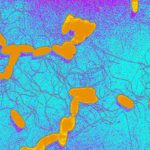Link to Pubmed [PMID] – 23237787
Presse Med 2013 Jan;42(1):68-75
Since the 1980s, EnterohaemorrhagicEscherichia coli (EHEC) have been recognised as emergent pathogens causing foodborne outbreaks. The latest one is the E. coli O104:H4 outbreak which occurred in Germany in May 2011 then in France. In France, the surveillance of EHEC infections is based on surveillance of hemolytic-uremic syndrome (HUS) in children under 15 years old. The average annual incidence is 0.8/100,000 children under 15 years old with a predominance of the O157:H7 serotype. EHEC are one of the six clinical pathovars of E. coli defined by their capacity to produce Shiga-toxins and for that reason, are part of a larger group called: Shigatoxin-producingE. coli (STEC). EHEC are a cause of different troubles ranging from mild diarrhea to haemorrhagic colitis which might be complicated by HUS in young children and thrombocytopenic thrombotic purpura in adults. The reservoir of EHEC is mainly the intestinal tract of ruminants: EHEC are transmitted via ingestion of contaminated food or water, person-to-person contact, direct animal contact and exposure to the environment. The diagnosis of the EHEC infections relies on isolation of STEC in stool samples or detection of genes encoding for Shiga-toxins. Treatment is mainly symptomatic. Use of antibiotics is controversial because the risk of HUS could be increased (release of toxins).

